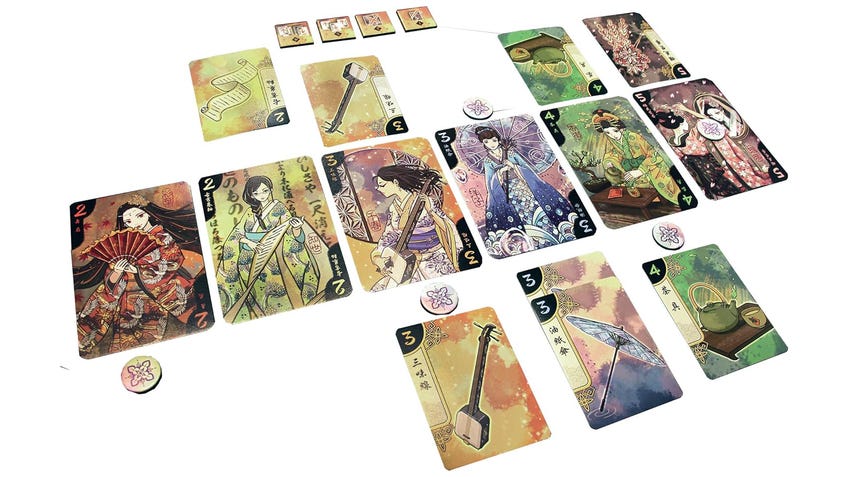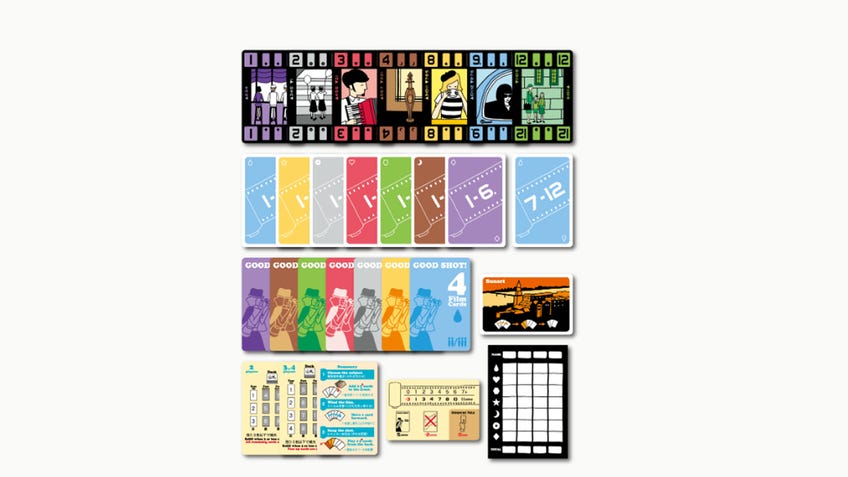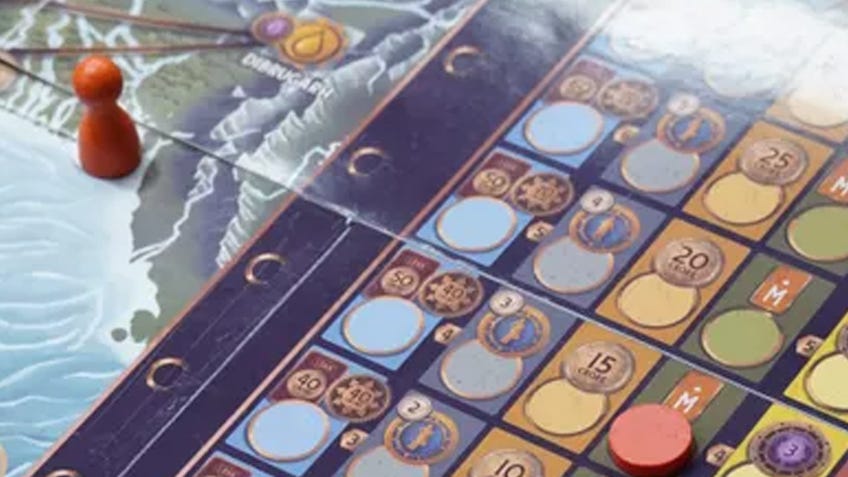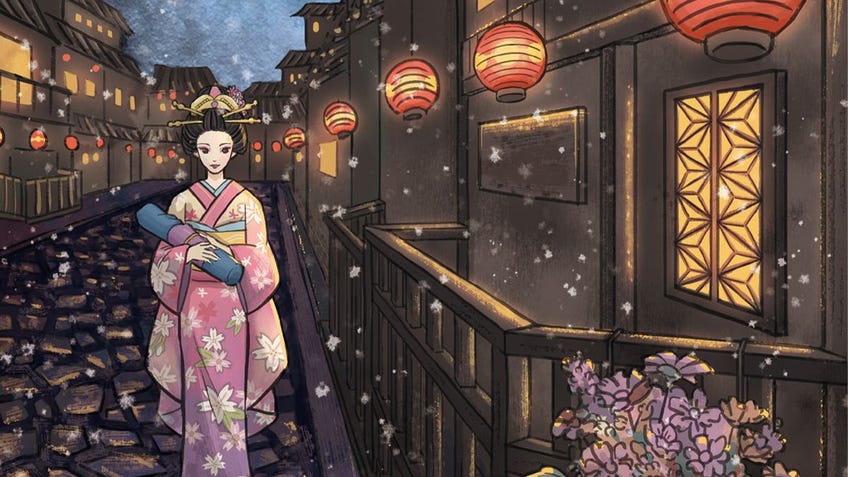6 board games from Asian designers you need to play
From compact card games to thinky strategy gems.
With plenty of new games jostling for space in the rapidly expanding tabletop market every year and high selling prices needed to break even or pay for reprints, running a tabletop game business is only sustainable for some. Not to mention, existing biases towards POC - often in the form of being used as stereotypical characters in games or repeated lack of representation discouraging them from entering the gaming industry - only add fuel to the fire.
Much of tabletop gaming feels inclusive since historical events or nuances across cultures can be incorporated into board games’ themes, along with a clear set of rules to make a game that is interesting, educational and overall wholesome. But that is often where the buck stops.
In fact, as per a study conducted by instructional and game designer Tanya Pobuda, only 4.1% of all designers of the top 200 tabletop games on BoardGameGeek were created by male people of colour, despite 93.5% of all the designers in the rankings identifying as male.
Extremely popular board games with Asian themes in the market include the likes of Hokkaido, Takenoko and Hanabi. They combine history and lore-adjacent Asian cultural themes with suitable gameplay mechanisms effectively. While these are fantastic board games in their own right, they aren’t created by Asian designers or artists.
To create a greater awareness of the Asian community amongst tabletop players, you can try out these six tabletop games designed by people of Asian origin.
1. Hanamikoji/Jixia Academy
Ideal for you and your best mate

Hanamikoji is a two-player card game on this list that is one of the best board games by an Asian designer for beginners to start with thanks to its relatively simpler rules and fewer components. It’s also by far the most popular and highly-rated game from Japanese game designer Kota Nakayama. The objective is to compete to win the attention of at least four out of seven geishas or be the first to get to 11 points.
As part of a tie-in with a crowdfunded video game Philosophic Love, Hanamikoji was re-released with an alternate skin in 2019, featuring different characters and titled Jixia Academy. The rules are the same and the cards are adorned with scholars instead of geishas.
The gameplay is simple to follow, and the elegant artwork deserves a mention. At the beginning, you receive six item cards, with the remaining cards kept facedown in a separate deck. Players take alternating turns, during which they must pick up a card and perform four actions.
The first two actions are choosing one card from your hand for scoring at a later phase and placing it facedown under the secret marker, and choosing two cards from your hand and placing them facedown under the trade-off marker to ensure they are not scored in this round. The third action involves placing three cards for scoring from your hand face up in front of yourself so that your opponent can pick one for their scoring, and you can keep the other two.
The fourth action is to take four cards from your hand and divide them into two sets of two cards each, so that you and your opponent can pick a set each and assign them to your corresponding geishas for scoring. These four actions need to be performed once each in a round and not in any particular order. Once these actions are completed, scoring is performed for the round.
Hanamikoji may give the impression of being pretty straightforward, but it can be reasonably intense and requires complete focus for its average 15-minute span. It has a high replayability value and can be suitable for whetting your appetite while awaiting your friends for a larger group game.
Buy Hanamikoji/Jixia Academy from Amazon.
2. Yokohama
A rule-heavy game for the experts out there

Yokohama is undoubtedly one of the more complex board games on this list. If you can patiently listen to your friends describe a ton of rules before digging into a game, then go for it.
Designed by Hisashi Hayashi, who has also lent his hand in creating the highly-rated Trains and Metro X games, Yokohama has an average playing time of 90 minutes. Once a fishing village, the Japanese city has become a prosperous hub at the beginning of the Meiji Empire’s rule. As a merchant of this bustling city, you try to gain the most fame through your business ventures to emerge as the winner.
The game tiles and other cards are picked randomly, leading to innumerable variations in the gameplay. You must collect various resources using your president pawn, assistant cubes and other pieces. You gain points for fulfilling contracts, acquiring technology and having the most acquisitions in areas like the church and customs department.
Playing Yokohama feels like learning a new language - it may seem challenging and unnerving when you first look at the range of components, but you’ll get the hang of it sooner than you think. The modular board adjusts comfortably for two people or up to a four-player game, and the changing locations will encourage you to devise new strategies. Overall, a high replayability score and a good balance between being challenging and compelling make this a must-have in your collection.
Buy Yokohama from Zatu.
3. Walking in Burano
House-building, cool artwork, and lots of cats!

Walking in Burano is a family-friendly board game that makes a lazy Sunday afternoon pretty interesting. The game is ideal for three or four players, but the rule tweaks are thoroughly adaptable for a two-player game. It is designed by Wei-Min Ling, who was also the creator and producer of Mystery of the Temples - which appears later on this list - and Walking in Provence, which has different gameplay mechanisms but similar vibes.
You need to build five colourful houses of three floors each on the island of Burano. The in-game currency is used to place down the floor cards for building each house, while scaffold cards assist with the building process until you find an appropriate floor card. When you complete five houses, the end game is triggered and the round is completed so everyone gets their fair share of turns.
That’s easier said than done. The 26 character cards in a four-player game score points for you based on the symbols on your chosen cards, whether they are pedestrians, potted plants, curtains or cute cats synonymous with the real-world city.
The limitations to picking and placing cards make for some interesting dynamics, and you must devise ways to use your current hand to your advantage. The cards from the floor supply are also open-facing, ensuring that the element of luck is minimised. While the game has a reasonably low complexity score, you will need to multitask adeptly to succeed.
Buy Walking in Burano from Amazon UK and Amazon US.
4. Wind the Film/Photograph
Photo taking with some caveats

No, Wind the Film is not a tabletop adaptation of Memento. But just like a Christopher Nolan feature may take some rewatches for you to ‘get it’, this game may require some replays to adapt to its multiple rules. Its seemingly straightforward yet interesting concept makes it well worth the effort. The game was designed by Saashi, also the designer for the single-player game Coffee Roaster, and illustrated by his wife Takako Takarai.
In Wind the Film, you’re a photographer who needs to snap photos from different sets of cards represented by unique colours. There are 12 cards for each colour, and you can lay down your cards in ascending or descending order.
That is where the simplicity ends. The order of cards in your hand cannot be changed when they are dealt. Moreover, the cards you play must be in ascending or descending order from the first played card and within three numbers of a previous card. There are additional rules to be followed on your turn and, at every stage of the game, you must try to be a step ahead of your opponents.
Wind the Film may initially feel tricky due to its many moving parts. You may not feel confident enough to walk away with a win on your first attempt. Despite its moderate length, the game is an intense brainteaser that requires your complete attention - or you’ll be left behind before you know it. If you have some board gaming experience and wish to climb to the bigger leagues, the stage is set with this game.
Buy Wind the Film/Photograph from Zatu and Amazon US.
5. Tycoon: India 1981
Be the boss of the biggest empire

The latest release on this list, Tycoon: India 1981 tripled its Kickstarter funding goal within 12 hours of its launch and has received some great early impressions. The game was designed by Sidhant Chand, who has published titles like Lakshwadeep and the travel card game Parikrama via his Indian label Zenwood Games.
In its initial stages of independence from colonial rule, India struggled due to a lack of resources and money. With the beginning of the industrial revolution arrived an ease of access and potential business growth. As industrial owners, you try to build your businesses from the ground up across six major sectors. Placing your factories across the Indian map moves you along the point track, as does obtaining production rights and political votes from the government.
Like Yokohama, this is a strategic and component-heavy game. There are 157 cards across seven categories, an array of diverse tokens, action markers and more. But the four-phase gameplay in each of the seven rounds plays out smoothly and doesn’t feel tedious.
To win the game, you need to accumulate three elements - wealth (or ‘Asset Value’), power you exert in the game (‘Influence’), and government support (‘Favor’) for winning tiebreakers. Early reviews have lauded the game for its replayability factor, a unique story that blends well with the gameplay and innovative game-scoring rules. You should definitely add this one to your playlist.
Buy Tycoon: India 1981 through late pledges on Kickstarter.
6. Mystery of the Temples
Time to bring out the hat, Indy

Designed by Wei-Min Ling and published by Taiwanese board game studio EmperorS4, Mystery of the Temples features intricate artwork from Maisherly Chan, who has also lent her hand to the designs featured in Walking in Burano, Hanamikoji and more.
In this game, you are an adventurer whose mission is to collect ancient runes. Curses protect the runes, and you need to collect crystals and align them in a particular order to break the spells.
An assortment of temple, wilderness and objective cards contribute to the reasonably intense gameplay. The game ends after the round in which the fifth curse is broken by a player.
The sparkly crystals and card designs elevate the game’s aesthetics, as does the setup, which requires strategic planning and making tough choices right from the get-go. Meanwhile, the in-game adjustments for a two-player game are good enough to remain competitive and fast-paced.
The game also has an advanced set of rules that you can use to test your strategy skills. You may find it tricky to plan your turns, as opponents may occupy the spots you’re targeting immediately. While Mystery of the Temples can seem complex due to its multiple sets of rules, there is never a dull moment in the game. Playing this game feels like 40 minutes well spent.
Buy Mystery of the Temples from Zatu



